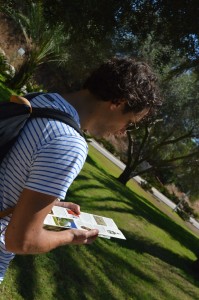This content has been archived. It may no longer be relevant

Hotels have brochures, menus, signage, maps, DO NOT DISTURB signs, and so on. They’re also responsible for connecting guests with services and activities in the surrounding community. When a European stays at an American hotel, or vice versa, the hotel could be their only link with local services, medical attention, even law enforcement if necessary… so translation and interpretation services are a must! Any amusement park that hopes to draw an international crowd will have to help multilingual guests find their favorite rides, provide them with dining options, perhaps offer them transportation and accommodation if it’s large enough. Your blogger’s family lives in central Florida, and goes to Disney World often; the next time you’re there, check out all the park maps you can grab at the entrance to the Magic Kingdom. Park guests must be able to find their way to Space Mountain and the Haunted Mansion in any language. And since Disney has parks on three continents now, entire rides and experiences have been translated. I can attest that the Haunted Mansion is as excellent in French as in English – and the Enchanted Tiki Room is pretty good in Japanese, too!
What about more sedate options, like cultural sites? More brochures, more maps, promotional videos, websites, audio materials… the list goes on! These materials aren’t always apparent if you’re visiting attractions in your home country, but they’re surely present. Does your city’s zoo or aquarium offer a tour map with a suggested route and facts of interest? Those have to be translated. Have you ever take one of those audio guided tours at a museum or an art gallery? Those have to be translated and recorded. And national parks had better be prepared to tell foreign visitors, in their native languages, where to pitch their tents so the bears won’t find them!
Remember: wherever there is language, there could be a need for translation. We’ve had recent experience of this kind of translation ourselves – if a foreign-language visitor takes an audio tour of the Lincoln Home National Historic Site in Springfield, IL, TrueLanguage will be right there with them!

